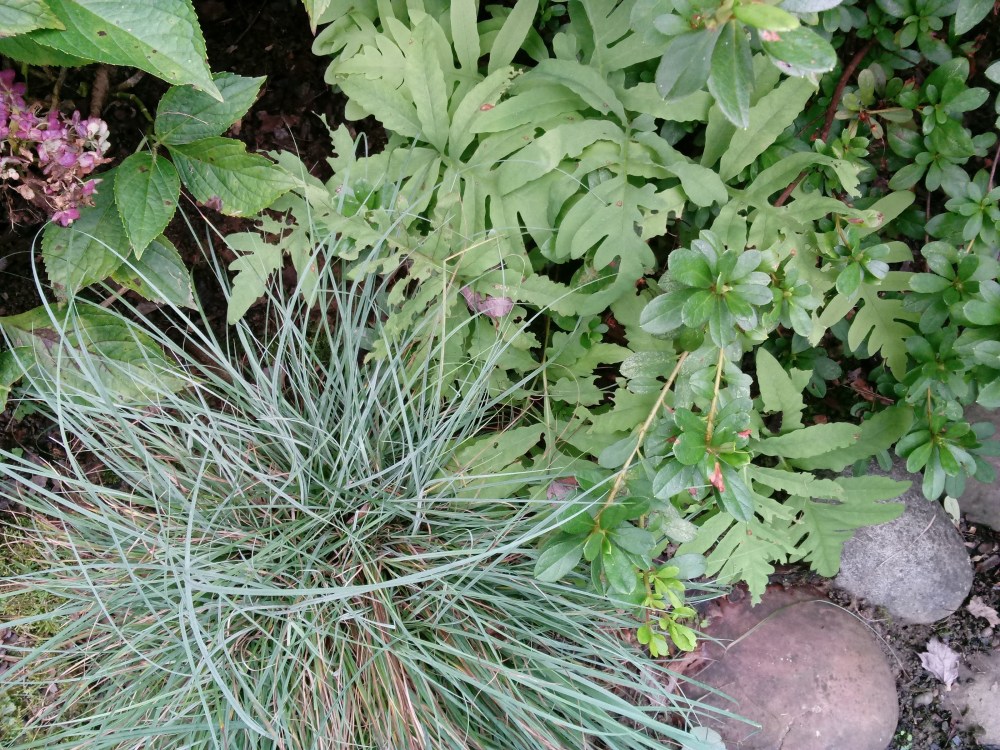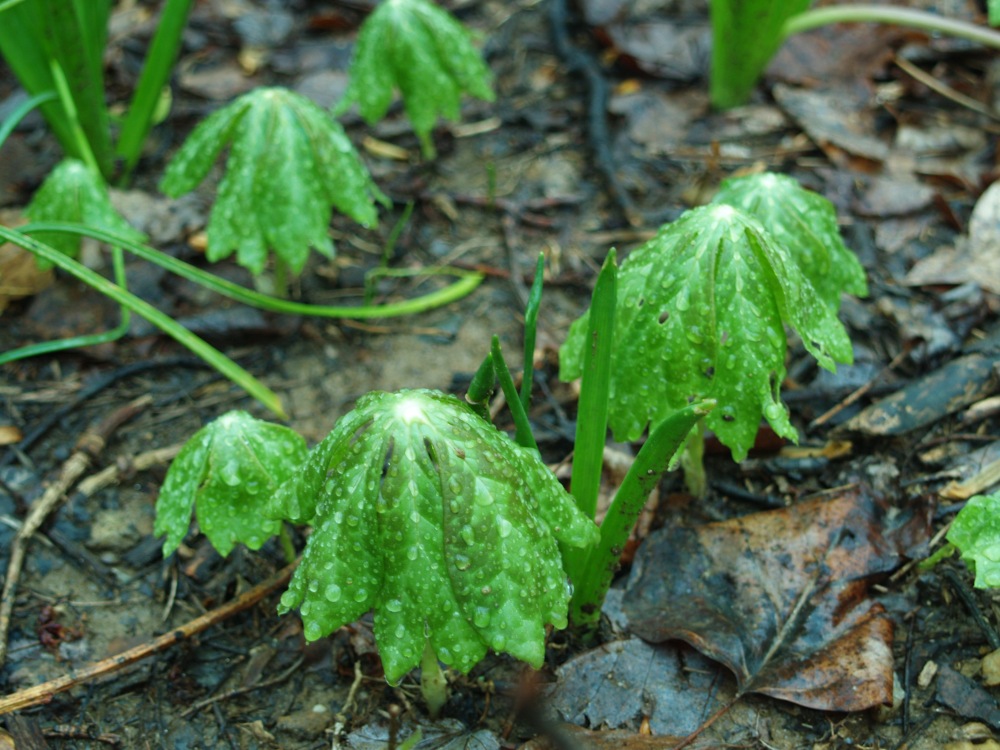Ideal spots for planting are easily identified in shaded areas of the garden. Here, sporelings of Japanese Painted and Sensitive ferns appear together, competing in scattered pockets of deep, moist soil. Too often, Japanese stilt grass encroaches, though it is less particular about the spaces it invades. Fortunately, while persistent and a considerable nuisance, the grass is shallow rooted and easily removed.

While ideal conditions are rare in this dry shade beneath towering maples, blackgum, and tulip poplars, I search for the next best, soils where a hole can be carved between shallow roots to plant Solomon’s Seals, mayapples (below), and trilliums. I’m inspired by my early summer visit to woodland gardens on Washington’s Kitsap Peninsula to fill every inch of shaded spaces with lush foliage, though this effort is challenged by the thin layer of soil and irregular irrigation.

In a bit more sun, and out of reach of the worst of tree roots, abundant seedlings of hellebores and toad lilies (Tricyrtis hirta) must be dug and potted for giveaways, or discarded. Several are transplanted, or left in place, though this takes space that is contrary to my lust to plant at least one of everything.

I hesitate to admit failures of common plants that anyone can grow. Japanese anemones are often aggressive in gardens, but here they have failed repeatedly in sun and shade, damp and dry. Certainly, there is some spot where soil and sunlight is ideal, but I’ve failed to find it, and probably never will since there’s no sense wasting another nickel on a plant I can’t find an ideal spot for.
Oh, the anemones were so pretty – I don’t think your nickels were wasted! 🙂
As I see it, it’s not worth the money to get two years of blooms.
even when I think I have found the “ideal spot” I have failure. I have read that both Brunnera and sweet woodruff are easy to grow . I placed them in a nice shady spot and have given them tinder loving care only to watch them fade and fail to return three years in a row. I doubt I will try again for a forth year
Chuck, anyone can grow brunnera and sweet Woodruff, ay least I can, though a variegated brunnera reverted to all green after a near death experience. I’m sure that anybody who tries enough plants will run into a few that won’t work for him. Often, the problem is bad timing, or in my case, neglect. I attribute most successes in this garden to blind luck.
almost anybody….I consider myself an above average gardener but these two plants have me baffled
I know the feeling. Anemones are not the only common, foolproof plant that fails repeatedly in my garden. I’m past baffled. I hardly give it a thought now. It’s not meant to be, so two tries and it’s gone forever.
The Kitsap Peninsula is a jungle. It is a very unique jungle. I would not compare it to any other ecosystem. It seems to me that much of the flora is too intermingled. If you garden is not so thick, that is probably a good thing.
We have considerably more rain here, and not just this year, but our summer heat is much more of a stress on shallow rooted perennials. And, open spaces between firs have much deeper soils than we have between shallow rooted maples and tulip poplars. While I can’t match the conditions on Kitsap, native Arisaema, Maianthemum, and Podophyllum grow in the wooded area of this garden, so I try as best as possible to match the conditions when I plant an Asian variety. I expect some will work, and others will struggle in my dry shade.
Ha! I hear that! I have been trying to take plants from the Los Angeles region back here for decades. Some actually do surprisingly well!